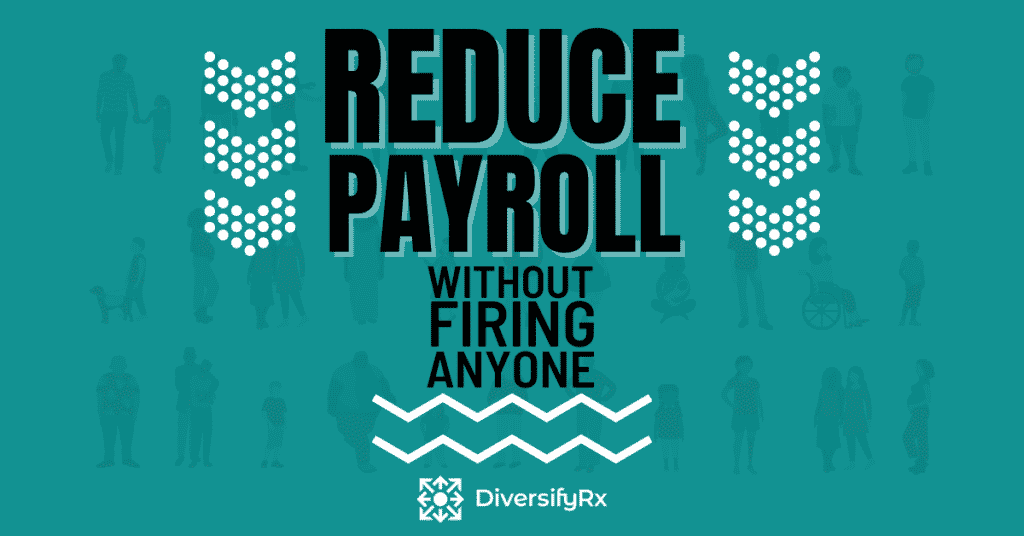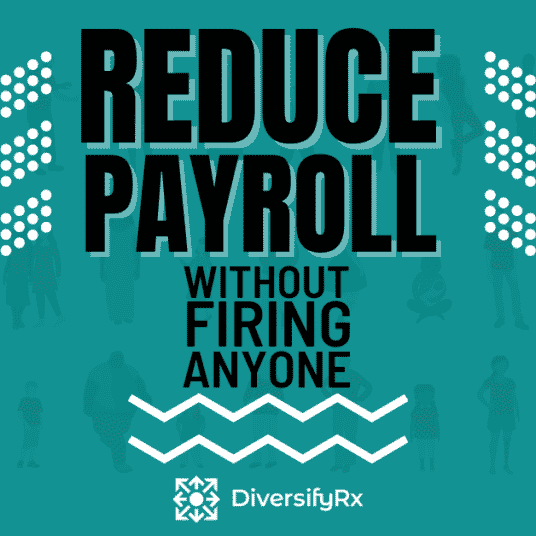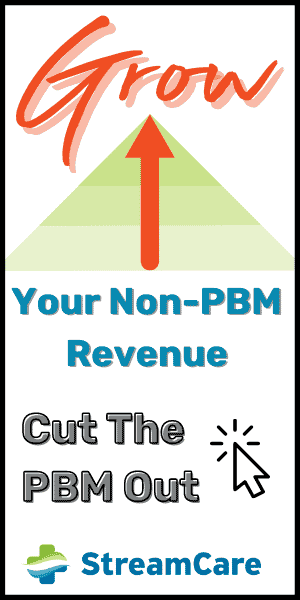Your pharmacy payroll has the power to make you or break you. We consider it one of the 3 critical KPIs (key performance indicators).
How Do You Know If Your Pharmacy Payroll is High, Low, or Just Right?
To determine your payroll grade, you need to calculate your payroll ratio. Your payroll ratio is a simple math equation that will help you to understand how much of every dollar you earn in revenue goes towards your payroll costs. Once you have your payroll ratio, you can then compare it against industry benchmarks.
Current Benchmarks for Payroll Ratio:
- Over 13% is a red flag and needs to be addressed immediately
- Between 11% and 13% is good and where most pharmacies should be
- Below 11% is where highly profitable pharmacies need to be
Calculating Your Payroll Ratio
You will need to gather some numbers to be able to do the simple math for calculating your payroll ratio. Here are the numbers you will need. You can use any time frame just ensure all numbers are for the same time period (for example a month, a quarter).
- All payroll costs including insurance, taxes, bonus, wages, vacation pay
- Total pharmacy revenue including Rx, OTC, services
Hopefully, you have a bookkeeper and can easily get these numbers. If not, run a report from your payroll company and then run reports from your pharmacy management system (PMS) and your POS to get your total revenues. If you need help, reach out to DiversifyRx at in**@*********rx.com, we are happy to help.
The Payroll Ratio Equation
(Total Payroll Costs ➗ Total Revenues) ✖ 100% = Your Payroll Ratio
Now, you can answer if your payroll is high, low, or just right.
Where did you end up? If you are higher than you need to be then keep reading for tips on reducing your pharmacy payroll without having to fire anyone.
Reducing Pharmacy Payroll Without Firing Anyone
Now, there may be some of you that say I want to fire someone and now I have a good reason to do what I have been needed to do. Great! Go forth and eliminate dead weight. Many pharmacy owners that I talk to have great staff and don’t want to eliminate anyone. Below are some options that will help reduce the payroll ratio without firing any employees.
Review Your Staffing Levels and Hours of Operation
Do you really need 3 techs closing the pharmacy at 6:30 pm every day? A great way to reduce your payroll is to reevaluate your staffing needs for your current operations. The keyword there is current operations. For many pharmacies, the madness of testing and vaccines is over. You may not need as many people on the clock at one time as you did before.
Examine your dispensing volume reports from your PMS and checkout reports from your POS and your hours of operation. What is the ideal schedule? Do you need as much overlap? When do you need to overlap and when could you operate with a leaner crew? Don’t forget to evaluate weekends. Some pharmacies have been able to drop or reduce their weekend hours with very little pushback from their patients. Create the ideal schedule to cover only the necessary shifts. Chances are you might find that you need fewer employee hours.
Review Your Benefits Package
Offering benefits such as health insurance to employees is a fantastic way to attract and retain great employees. However, it can get expensive. Here are a few tips to help reduce your benefits costs without eliminating them.
- Get many quotes from different types of programs. We highly recommend ECCHIC as they bring complete transparency to health insurance and many owners have reduced their insurance expenses by thousands of dollars with them.
- Ensure that all employees accepting insurance still need it. Perhaps their spouse’s job changed and they now have insurance for the family and your employee just didn’t think about canceling through you. You might find that some employees don’t need it anymore.
- Some employees might be better off taking plans from their state exchange and taking advantage of subsidies available to them.
Ask Employees For Any Volunteers To Reduce Hours
You may think that all employees want to keep all their hours. It could be true or maybe it isn’t. You don’t know until you ask. Let employees know that you are a little fat on the payroll hours and that if anyone would like some additional time off, to let you know. This could be leaving an hour early twice a week so they can attend their kid’s soccer practice. Or coming in a half-hour later every day. Even small concessions will make a big impact on your overall payroll.
Review Your Employees’ Duties
Do all of your employees need to be doing the same tasks? Are there some tasks that can be delegated to lower-paid employees? If so, then you may be able to save on labor costs by reassigning some duties.
Years ago I coined the phrase ‘work at the top of your license’. This was a philosophy I created while owning my first pharmacy. I wanted employees to do the job only they could do. There are some tasks only a pharmacist can do and some only techs can do. I don’t want to pay a tech to do cashier tasks. That isn’t a smart or efficient use of my payroll dollars.
You want your employees working at the top of their license (or at the top of their skill set for unlicensed employees). By rearranging tasks you might free up time for your pharmacists and techs and find that you need to hire another cashier, not a technician. Having the right ratio of employees to perform the tasks they can, will often reduce your payroll as you rely on lower-wage employees for mundane tasks and enable your high-cost employees to flourish where only they can.
Review Your Employees’ Salaries
The first step to taking stock of your current employees’ wages is to get them on a single sheet of paper (digitally or physically). This will allow you to look at them individually and in relation to one another. Here are a few questions to ask yourself.
- Would I rehire this employee today knowing what I know now?
- If this employee left tomorrow, what pain would I experience?
- What special skills do they have?
- How does their wage compare to the current market rate?
Generally, I don’t recommend going through and slashing employees’ wages, no matter how bloated they may be. Fixing over-compensated employees is delicate work and is best approached slowly and with a lot of communication. One method I recommend is to begin to institute performance metrics. I have no problem paying top dollar if I get top performance.
Based on your pharmacy and the specific nuances, what could these highly-paid employees bring to the table to offset their wages? Could a technician get certified for vaccinations or start performing point of care testing to take duties off your pharmacist? Could a cashier start having minimum supplement sales goals to meet?
Once you have performance metrics in place, their wage may become justified or it may become apparent they are not a fit for your pharmacy or the current duties you want them to perform. Having open and transparent communication and a longer timeline will help determine the best course of action.
You Don’t Have To Do It Alone
Reducing your payroll doesn’t have to be a difficult task. DiversifyRx has created a step-by-step online course to take you or your manager through the entire process from start to finish as a part of our Pharmacy Badass University. We can help you get this KPI and your other critical KPIs in the green so you can have the pharmacy of your dreams.


















